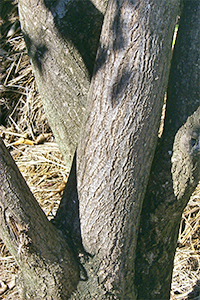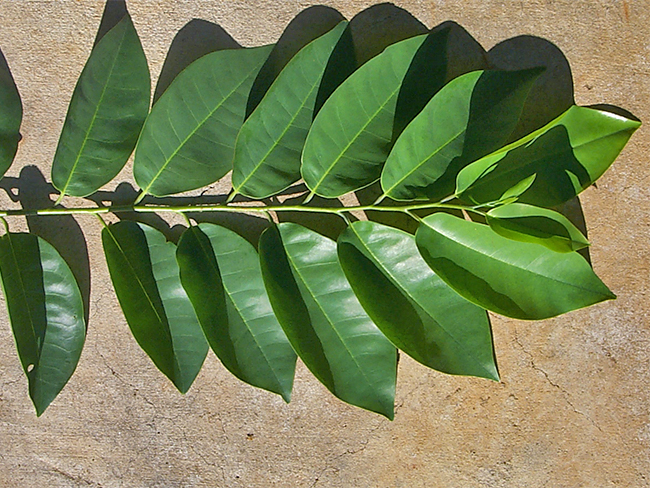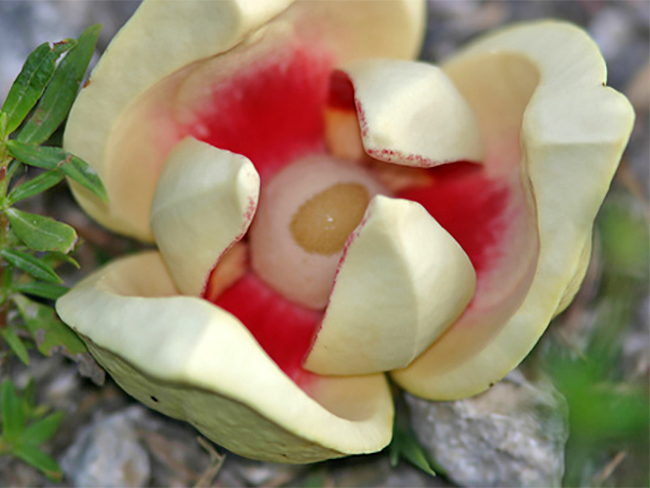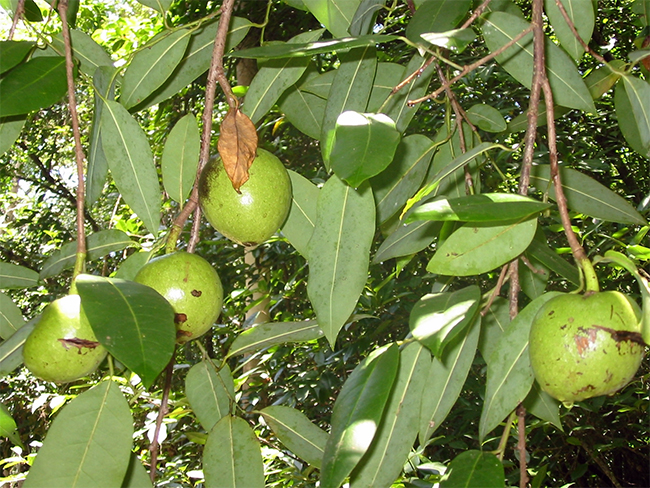Pond apple
Scientific name: Annona glabra
Declaration status: Class A
Pond apple is a Weed of National Significance. For more information, go to the Australian Government's Department of Environment website.
Pond apple is native to the swamplands of North, Central and South America and West Africa.
It was introduced to Australia as grafting stock for the custard apple.
Pond apple has invaded 2,000 hectares of the wet tropical region in North Queensland and individual plants are located in northern New South Wales.
Pond apple has been found in small, sporadic outbreaks in the Darwin and surrounding rural areas. The biggest infestation found to date was 2013 with over 100 plants found and destroyed.
It has also been reportedly found in Danydji, a remote community in Arnhem Land.
Further monitoring of these areas is being undertaken by Weed Management Branch staff.
Pond apple could potentially infest all Top End waterways.
It is able to grow in the same environment as mangroves. It can tolerate flooding and grows well on riverbanks, in disturbed wetlands and in rainforests.
Impact
Pond apple can have all of the following impacts:
- create dense stands that compete with and replace native vegetation
- create an undesirable habitat for wildlife by replacing food and shelter
- establish in undisturbed areas, making it difficult to locate
- thrive along fence lines, farm drains and creeks
- spoil the appearance and landscape of native areas.
Identification
You should use the following information as a guide. There may be other plants or weeds that look similar.
- small tree, usually 3m to 6m tall, occasionally up to 15m tall
- usually a single trunk with grey bark
- alternate leaves, 7cm to 12cm long, prominent midrib, darker green colour on the upper surface (depending on age) and paler on the underside
- creamy white to light yellow flowers 2cm to 3cm in diameter
- three leathery outer petals and three smaller inner petals and red inner base
- fruit looks like a smooth-skinned custard apple, similar in shape to a mango, 5cm to 15cm wide, contains about 140 pumpkin-like seeds.
View a 3D interactive model of this weed below.
© Regional NSW through NSW DPI Invasive Species Biosecurity
Model created by Rachel Klyve
To find out more, get the pond apple weed note on the Department of Lands,Planning and Environment website.
If you are unsure, contact the Weed Management Branch.
Control
If you think you may have seen pond apple, or have this weed on your property, don't attempt to control it. Contact the Weed Management Branch immediately for assistance.
Pond apple is on the alert list for environmental weeds.
This is a list of weeds that threaten biodiversity and cause other environmental damage.
Give feedback about this page.
Share this page:
URL copied!




